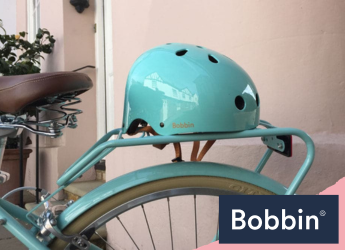How Long Do Bike Helmets Last?
Every time you hop on your bike, a crucial piece of gear stands between you and potential injury: your helmet. It’s your trusty guardian, ensuring your safety during those exhilarating rides. But have you ever wondered how long a bicycle helmet lasts?
In this article, we’ll dive into the lifespan of this must-have head protector. Join us as we unveil the factors that affect their durability and the warning signs you need to look out for. Let’s pedal through the essential insights to keep you riding safely, shall we?
The Lifespan of a Bike Helmet
The lifespan of a helmet refers to the period during which it remains effective. In essence, it’s the duration a bike headgear can be relied upon to safeguard your head in the event of a crash. Understanding this concept is vital for ensuring your safety while cycling. For one, like all safety essentials, helmets don’t last forever - both apply to kids and adult bike helmets.
Common misconceptions
There are several misconceptions surrounding the durability of cycling helmets. Some cyclists believe that as long as their safety caps look okay from the outside, it’s still safe to use. However, the internal components can degrade even when the exterior appears intact.
Additionally, many assume that helmets have an indefinite lifespan. This isn’t the case, as they do have a finite period during which they can absorb and dissipate impact energy.
Industry standards and guidelines
The bike helmet industry has established standards and guidelines for helmet lifespan. For one, they recommend replacement every five to ten years, even if it hasn’t experienced a crash. It’s essential to ensure your black bike helmet offers the protection you need when it matters most.
Factors Affecting the Lifespan
Let’s begin with the environmental factors: sunlight, temperature, and moisture. Prolonged exposure to UV rays can weaken the helmet’s shell and materials over time. This, in return, makes it less effective at absorbing impacts.
Extreme heat or cold can also affect your bicycle helmets structural integrity. Excessive heat can cause the head shield’s foam to degrade. Meanwhile, extreme cold may make it more brittle.
Additionally, helmets are not waterproof. Moisture can seep into the padding and other components. Over time, this can lead to mould, odour, and reduced effectiveness.
Next is the frequency of use. Safety helmets endure wear and tear with every use. Frequent riders may need to replace theirs sooner than occasional riders. This can be due to the cumulative impact of multiple rides.
Finally, maintenance and care. Regular maintenance can extend its lifespan. This includes cleaning, checking for loose parts, and ensuring a proper fit. (This is how should bike helmet fit.) Neglecting maintenance can lead to faster deterioration and reduced protection.
Understanding these factors can help you determine when to replace your helmet. The same goes for childrens bike helmets.
Signs It’s Time to Replace Your Helmet
Watch out for these warning signs:
- Visible damage: Any visible damage to the outer shell is a clear indicator that it should be replaced. These flaws include dents, scratches, or cracks. They can compromise your silver bike helmet’s structural integrity.
- Cracks or deformities: Even hairline cracks can significantly weaken a helmet. Inspect your headwear regularly for any signs of cracking or deformities. Pay attention to the inside of the shell and inner foam.
- Age-related wear and tear: Over time, the materials in a helmet degrade, even if it hasn’t been in a crash. Most helmet manufacturers recommend replacing your helmet every five to ten years. This can depend on usage and exposure to environmental factors.
Ignoring these indicators can have serious consequences. Helmets are designed to absorb and dissipate the force of an impact. They can, in fact, save your life during a cycling accident. However, a compromised one can’t provide this level of protection. And this can put you at a higher risk of head injuries.
Your safety should always come first. When in doubt, replace your helmet to ensure ongoing protection while cycling. Seize this chance to upgrade to a superior model. Browse our range of helmets here from; blue helmets, pink helmets, red helmets, green helmets and black helmets.
How to Extend Your Helmet’s Lifespan
By following these tips, you can extend your helmet’s lifespan:
- Store your helmet in a cool, dry place, away from direct sunlight and extreme temperatures. A helmet bag or shelf works well to protect it from damage.
- Periodically inspect your bike helmet for any signs of wear, damage, or deformities. Pay attention to straps, buckles, and the shell's integrity.
- Clean your head shield’s exterior with mild soap and water. Remove and hand wash the padding for a fresh feel. Avoid harsh chemicals and high-pressure cleaners, which can damage the materials.
Round-up
In the world of cycling, your helmet is your faithful guardian, but it’s not invincible. Understanding the factors outlined in this blog is crucial for your safety.
When it comes to your well-being, shortcuts shouldn’t be an option. Don’t gamble with a compromised helmet; replace it when necessary. By doing so, you’re ensuring that each ride is as safe as can be, and that’s a commitment every cyclist should make. Stay safe, ride smart, and keep pedalling towards your adventures!
Explore Bobbin’s extensive helmet collection. We feature options in various colours and sizes, including toddler helmets. Now, let’s dive into what’s next: What Size Bike Helmet Should I Get?











